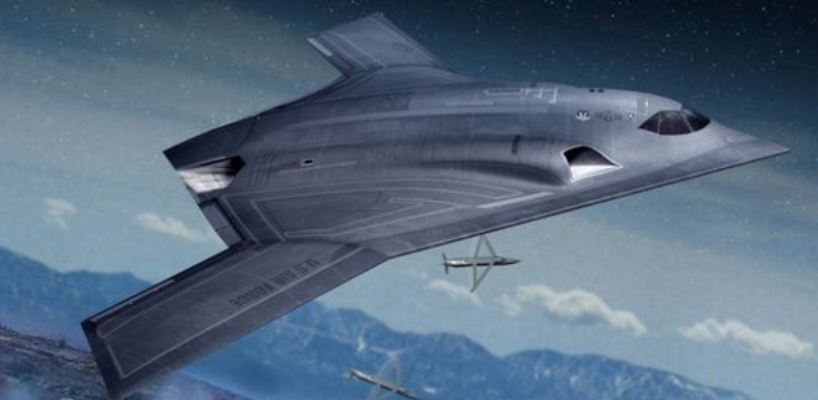The U.S. Air Force is moving ahead with a major aviation initiative, announcing Oct. 27 that it has awarded the contract to Northrop Grumman to develop and begin building a new deep-strike bomber. Estimates place the value of the contract at nearly $80-billion over the life of the program.
Northrop Grumman has not announced where it will build the bomber, but struggling aerospace regions including Southern California are celebrating the contract award for having the potential to bring thousands of new jobs.
The Long Range Strike Bomber (LRS-B) contract covers the program’s engineering and manufacturing development (EMD) phase and contains options to produce the first 21 of the 100 aircraft the Air Force ultimately wants to buy. The Air Force said that EMD will cost $23.5 billion and that procuring 100 planes will cost another $56.4 billion, putting the program’s total price tag at almost $80 billion.
At a Pentagon press briefing, Air Force officials declined to reveal why they selected Northrop Grumman for the secretive program, other than to say that the Falls Church, Virginia-based company offered the “best value” for the nation. However, Northrop Grumman has publicly touted its experience in designing, building and sustaining the stealthy B-2 Spirit, the youngest member of the Air Force’s existing bomber fleet.
Winners and Losers
In a statement on the contract announcement, Wes Bush, Northrop Grumman’s chairman, chief executive officer and president, said that “we look forward to providing the Air Force with a highly capable and affordable next-generation” LRS-B. “Our team has the resources in place to execute this important program, and we’re ready to get to work,” Bush added.
The losing bidder, a Boeing-Lockheed Martin team, expressed disappointment with the announcement but did not say whether it would file a protest with the Government Accountability Office. Debriefings for the competitors could begin late this week.
“We will have further discussions with our customer before determining our next steps,” the team said in a statement. “We are interested in knowing how the competition was scored in terms of price and risk, as we believe that the combination of Boeing and Lockheed Martin offers unparalleled experience, capability and resources for this critically important recapitalization program.”
The Air Force formally launched the LRS-B competition in July 2014 by sending a request for proposals to industry. Lt. Gen. Arnold Bunch Jr., the Air Force’s military deputy for acquisition, said the Air Force was appropriated $1.9 billion from fiscal years 2011 to 2015 to conduct risk reduction for the program.
Air Force officials said the new aircraft is needed to replace aging bombers, including the B-52, whose average age exceeds half a century, and to counter increasingly sophisticated threats, such as advanced surface-to-air missiles. The Air Force plans to begin fielding the nuclear-capable, optionally manned LRS-B in the mid-2020s.
“The capabilities of the LRS-B will ensure the United States is able to hold any target on the globe at risk while providing our combatant commanders critical operational flexibility across the range of military operations,” said Gen. Mark Welsh, Air Force chief of staff.
The LRS-B is one of the Air Force’s top three modernization priorities, along with the Boeing-built KC-46A tanker and Lockheed Martin-built F-35 Joint Strike Fighter. Some observers had speculated that the Air Force might pick Northrop Grumman for the new bomber to ensure the company remains a viable competitor. But Air Force acquisition chief William LaPlante insisted that industrial base concerns did not factor into the LRS-B decision.




